Sep 24, 2020
Getting Away in Japan: Toyama Prefecture
While most regions of Japan seem to have their own perfect time of year to visit Toyama, the ‘gateway to the Sea of Japan,’ in northern Chubu, is spectacular all year round. With rugged mountains on one side and pristine beaches on the other, Toyama is dramatic scenery, picturesque villages, and gorgeous seafood. And as it is a stop on the Hokuriku bullet train route, it makes for an excellent day trip location.
What to see in Toyama
Toyama-shi
The capital city of Toyama Prefecture, Toyama-shi, should be the first spot for your travels, particularly if you have arrived by train. And if you wish to relax after your journey, Toyama Park is the ideal place to take a breather. Within the grounds, you can find a reconstruction of Toyama Castle, which now houses the Toyama Municipal Folk Museum detailing the history of the castle and city. Its expansive grounds and Japanese garden are a popular spot for cherry blossom viewing in springtime.
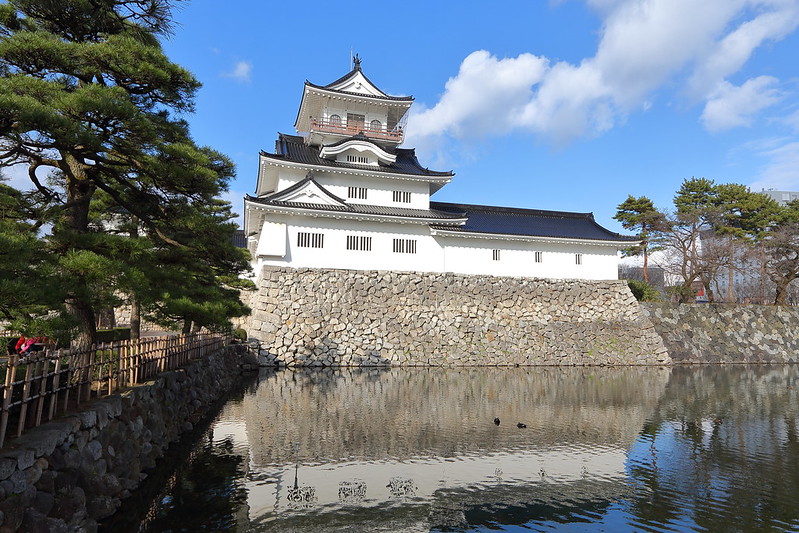
Perhaps even better for the sakura season is the Matsukawa Riverside, where you can find 500 cherry trees stretching 2.5 kilometers through the city. This experience is all the more magical from one of the boat tours that traverse it.
Stepping back in time is Yatsuo no Machinami, a historic and picturesque Edo era townscape. The location of the famous Owara Kaze-no-Bon Festival, the cobblestone street is among the 100 best roads in Japan.
If you have kids with you, you won’t want to miss Toyama Family Park. With its theme of people and forests living in harmony, this zoo gives you a chance to pet and feed the animals, even giraffes, and wolves, on special occasions.
Where: Toyama-shi, Toyama (map)
Gokayama
A UNESCO World Heritage Site, Gokayama, and the surrounding villages offer a view into the lives of Japan’s rural mountain dwellers otherwise lost to the ages.
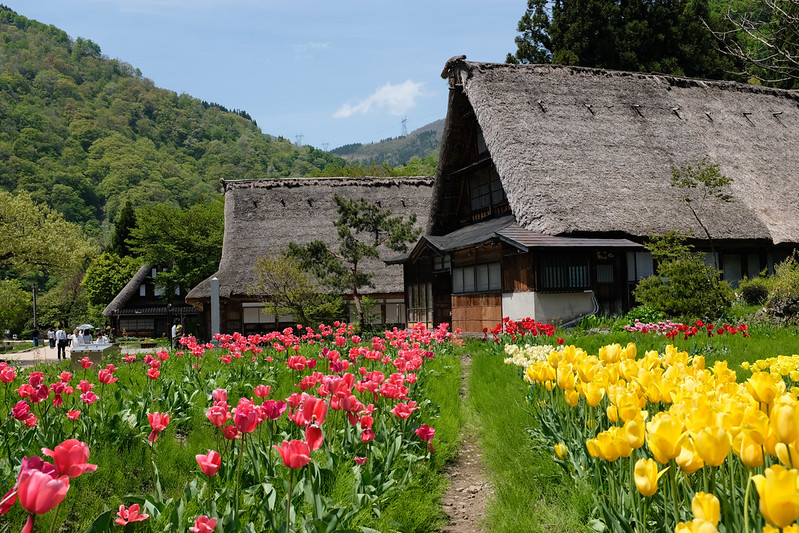
Nestled within the remote mountain range that connects Toyama with Gifu, steeply thatched-roofed farmhouses spread along the Shogawa River Valley. These buildings, called ‘Gassho-zukuri’ for their resemblance to the hands of Buddhist monks in prayer, are at their most stunning when capped by the pillowy snow of winter, though they are worth a visit at any time of year. It is even possible to spend the night in some of them.
Where: Ainokura Nanto, Toyama (map)
Tateyama Kurobe Alpine Route
The area of Tateyama offers views and experiences of Japan’s dramatic natural beauty like few other places. Perhaps most spellbinding of all is the Tateyama Kurobe Alpine Route, also known as the “Roof of Japan.” With an elevation change of some 2,400 meters as it climbs into Nagano, the route traverses Mt. Tateyama, down into the Kurobe Gorge and onto Mt. Akazawadake on the other side of the Kurobe Dam. Stunning all year round, perhaps the best time to visit is in April when the snow is piled up ten meters high on the roadside, at once claustrophobic and mesmerizing.
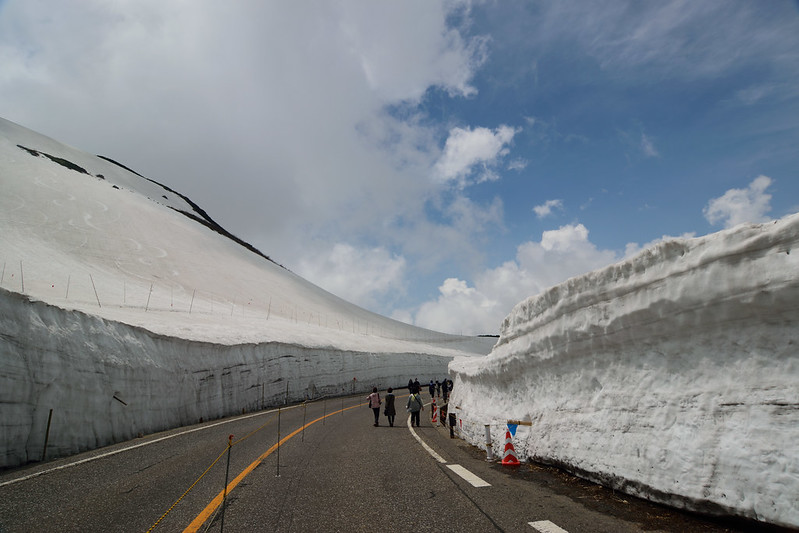
While it is possible to hike the route if you aren’t quite that energetic, why not instead take a guided tour that will carry you by bus, cable car, bus, tram, ropeway – and a little on foot across the dam- from one side to another? Or should the mood take you, there are pleasure boat rides on Kurobe Lake, perfect for seeing the changing autumn colors.
Where: Tateyama, Nakaniikawa District, Toyama (map)
Takaoka The Home of Doraemon and Bronze
If you want to get on the road-less-traveled while still staying city-side, Takaoka is the town for you. It was at one-time a castle town, though all that remains of the seat of power is the delightful Takaoka Castle Park. With short hiking trails, sprawling lawns, and pleasure boat rides along the old moat waterways, Takaoka is a peaceful place in which to unwind as well as being a popular hanami spot.
Takaoka is perhaps best known for its bronze production, accounting for some 95 percent of Japan’s output. Takaoka-Imono, as the local metalware is known, has a history going back to the early 17th century, and today you can see many artifacts on display in the town as well as picking up beautiful souvenirs.
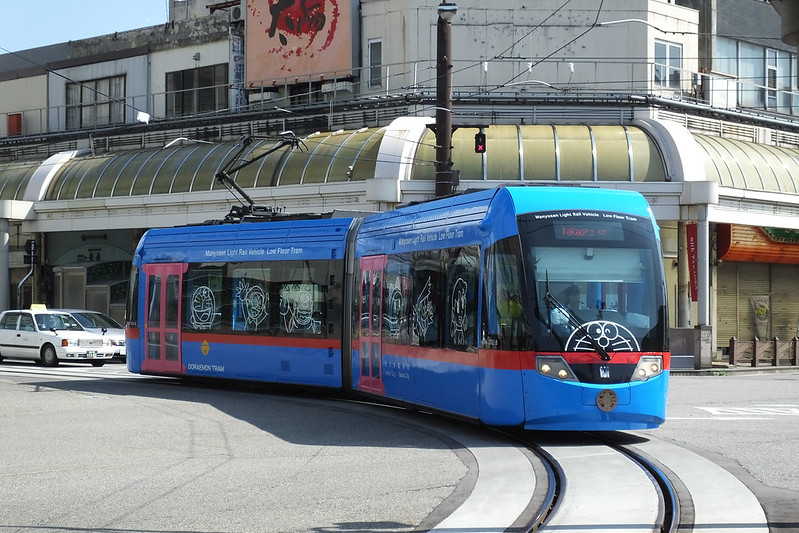
And while you are in the area, whether you have kids or are just a big kid at heart, you must go on a Doraemon-spotting spree. Takaoka is the birthplace of Fujiko F. Fujio, creator of the famous anime, and all over the city – from trams to boulevards to playgrounds – you can find celebrations of Japan’s most renowned robot cat.
Where: Takaoka, Toyama (map)
Toyama Bay
Rugged and stunning, the coastline of Toyama bay offers spectacular views at any time of year, though it is perhaps winter when observed from Amaharashi Beach, the crisp and clear skies revealing the Tateyama massif stark against the skyline when the area reaches its apex of grandeur.
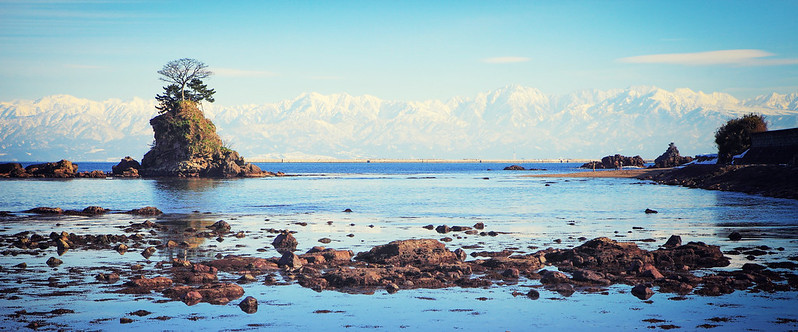
Not to be outdone, across the bay on the east coast, Ikuji beach is considered to be one of Japan’s 100 best sunsets, as the sun falls behind Nanao, sending oranges and pinks into the sky and reflecting off the water. Continuing further eastwards, you can find Miyazaki-Sakai Beach, which is named after the semi-precious jade stones that regularly wash ashore.
Where: Amaharashi, Ikuji, and Miyazaki-Sakai Beach (map)
Getting Away in Japan
This article is part of a Japan Info Swap series about traveling around Japan. Check out the others in the series here.
Image by dconvertini via flickr [CC BY-SA 2.0] – Modified
Image by YU-JEN SHIH via flickr [CC BY-SA 2.0] – Modified
Image by cotaro70s via flickr [CC BY-SA 2.0] – Modified
Image by Ming-yen Hsu via flickr [CC BY-SA 2.0] – Modified
Image by SLTc via flickr [CC BY-SA 2.0] – Modified
Image by 歲月之歌 via flickr [CC BY-SA 2.0] – Modified


About the author